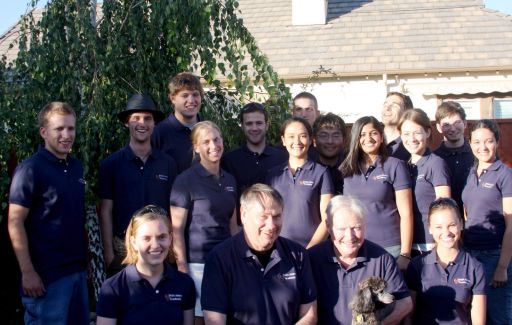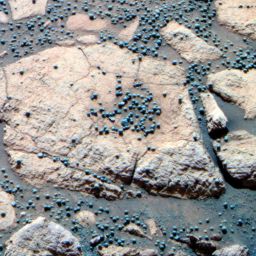Emily Lakdawalla • Jul 08, 2008
A summer of fun for space students
When you were in college, what did you during the summer? I got a summer job as a camp counselor a couple of years, and traveled a bit. If you are the kind of kid who won a position as one of the Red Rover Goes to Mars Student Astronauts, however, you might spend your summer at the "Ames Academy," at NASA's Ames Research Center. I probably shouldn't call Courtney a "kid" anymore -- it always irritated me when one of my former professors used to call us all "kiddo" -- but I'll have to admit it's going to be hard for me ever to think of those guys as anything but kids. Anyway, for those of you who've been wondering whatever happened to the Student Astronauts, here's one answer!

courtesy of Courtney Dressing
The 2008 Ames Academy
The 2008 Ames Academy for Space Exploration with Ames Director Pete Warden and Academy Director Douglas O'Handley. Back row: staff member Jon Mihaly and students Mike Borden, Thomas Franklin, Sam Zarovy, Joel Sasser, David Murakami, Mike Hrynyk, and Robert Citron. Middle row: students Rachel Forman, Heather Beem, Anita Mantri, and Sarah Nowak, and staff member Jennifer Kissinger. Front row: Courtney Dressing, Pete Worden, Douglas O'Handley, Doug's dog Skipper, and Emily Calandrelli.
NASA / JPL / Cornell
The 'berry bowl' at Opportunity's landing site
This false-color composite image, taken by Opportunity in a region close to its landing site dubbed "Opportunity Ledge," shows finely layered sediments that have been accentuated by erosion. The sphere-like grains, or "blueberries," distributed throughout the outcrop are geologic features called concretions that form in preexisting wet sediments. By studying the berry bowl scientists found that much of the hematite at the Opportunity landing site was carried in the "blueberries.""The whole Ames academy is also working on a group project trying to recreate the soil clumping observed by Phoenix by mixing different types and concentrations of salts with Mars soil simulant and water and changing the temperature from -80 C to -30 C [-110 to -20 F]. In the second phase of the project we plan to simulate the scooping process as well and hopefully run the experiment at Martian pressure if we can get access to a pressure chamber."
Courtney notes that among the members of this summer's Ames Academy, she's the only college junior; everyone else is either a rising senior (presumably their work will go toward a senior thesis) or a first-year grad student. Well done Courtney!
The Time is Now.
As a Planetary Defender, you’re part of our mission to decrease the risk of Earth being hit by an asteroid or comet.
Donate Today

 Explore Worlds
Explore Worlds Find Life
Find Life Defend Earth
Defend Earth

